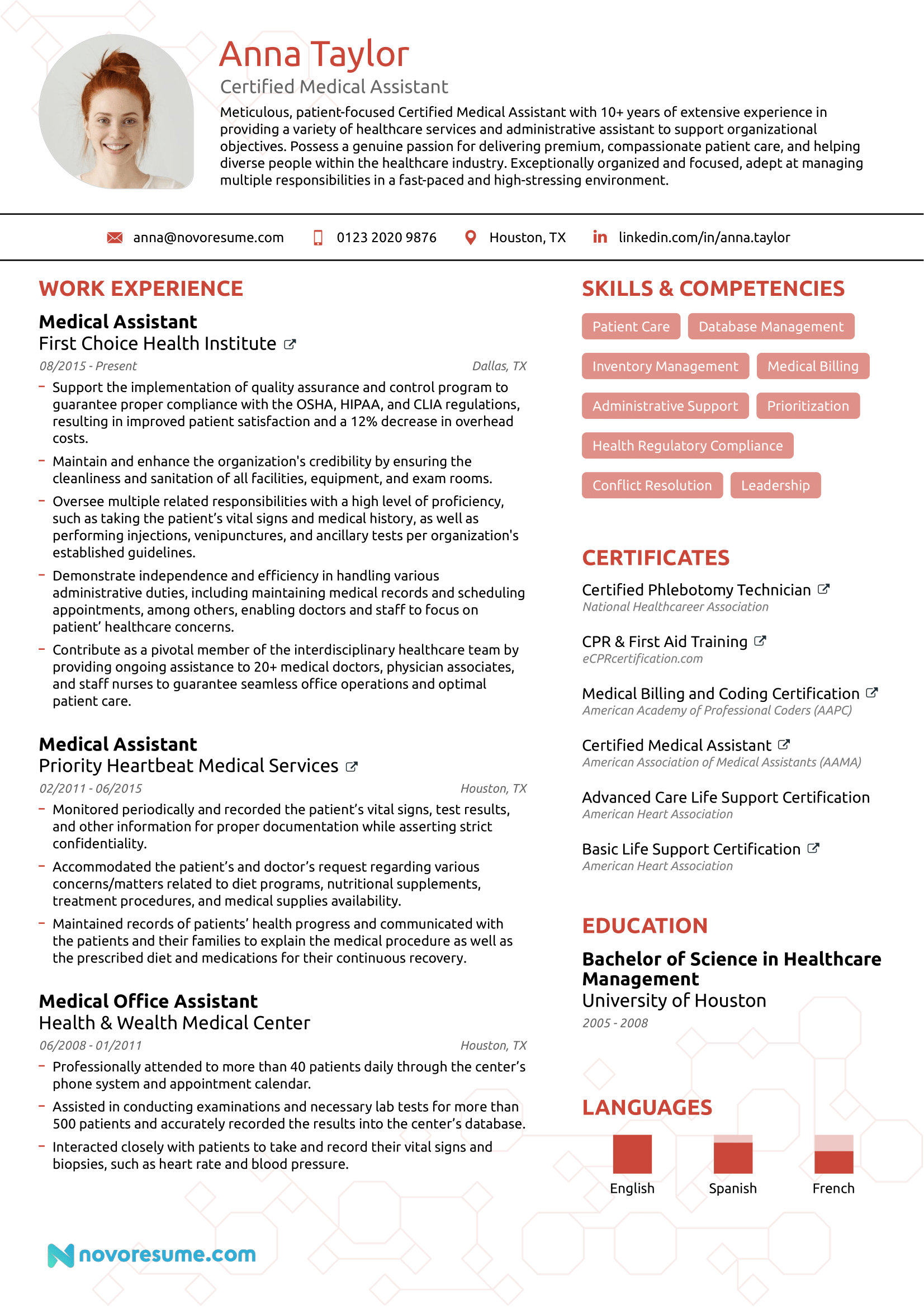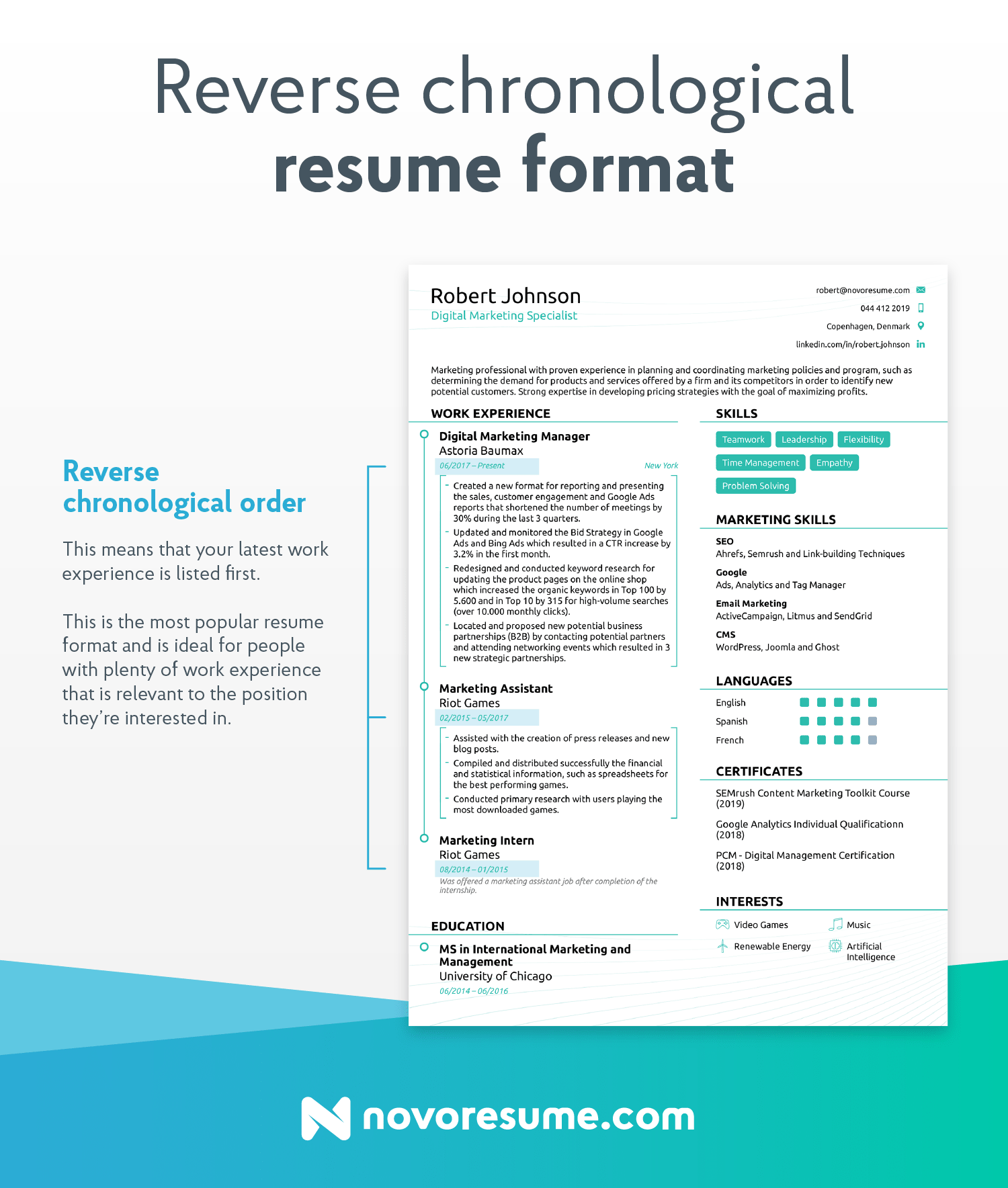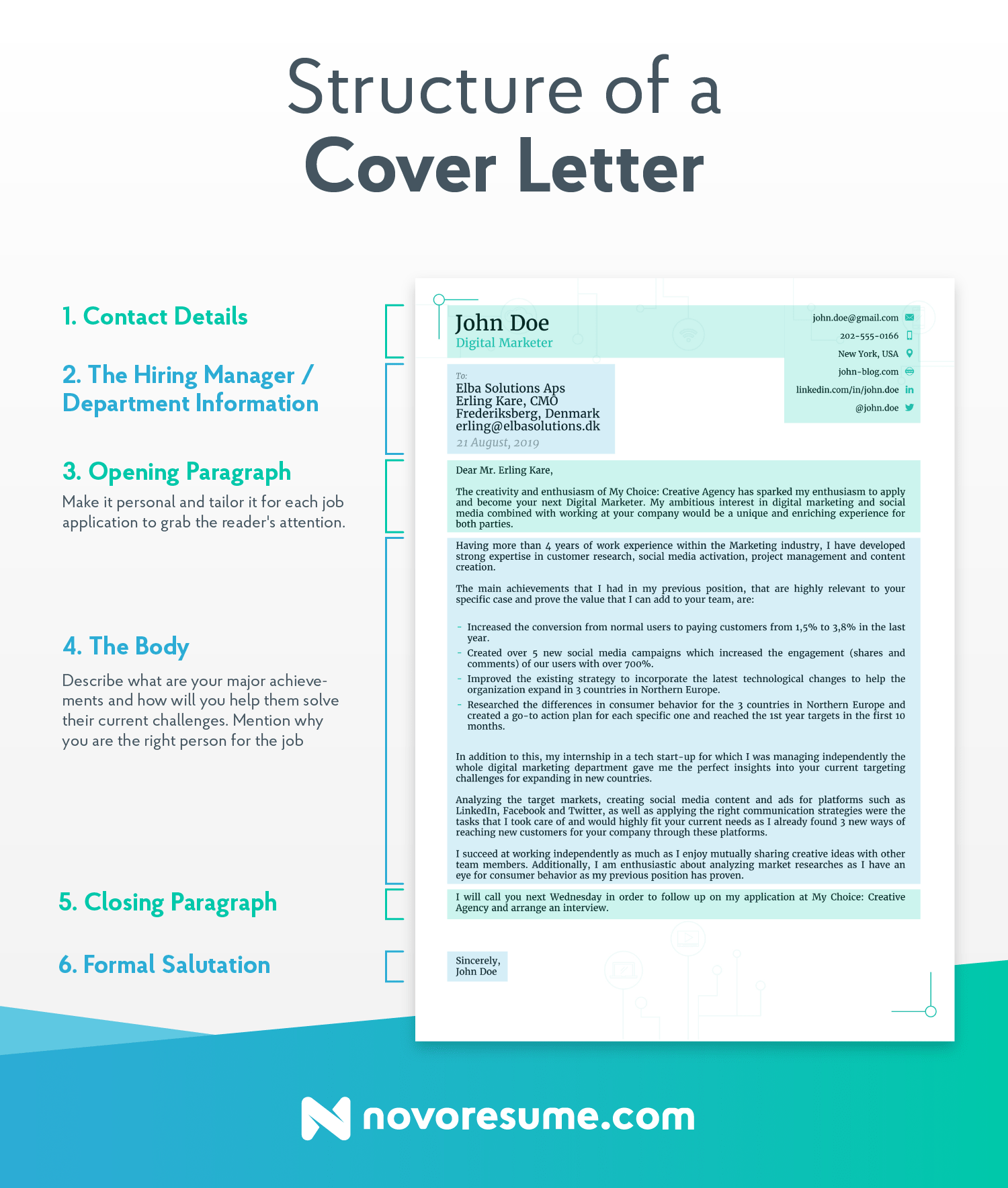Medical assistants play a crucial role in protecting our lives.
And you’ve got everything it takes to do so.
In fact, you love taking care of your patients.
However –
Taking care of your resume is a different story.
Thankfully, we have created this guide to assist you with every step in building a medical assistant resume.
- An example of a finished medical assistant resume that works
- How to write a medical assistant resume that’ll fill up your interview diary
- How to make your medical assistant resume stand out [with top tips & tricks]
Before we get into the details, here’s a medical assistant resume example, created with our very own resume builder:

Looks first-class, right?! The good news is that you can create one just like this.
Just follow the steps below.
How to Format a Medical Assistant Resume
Before you can wow the recruiter with your skills and experiences, you need pick the best format.
You see, there will be a correct format for your specific situation.
Choosing the correct format will allow the recruiter to easily see your best attributes.
The most common resume format is “reverse-chronological”, and it’s not surprise. Essentially, this format puts your best attributes up-top. We recommend starting with this format.

The following resume formats also get our approval:
- Functional Resume – If you have the relevant skills, but not much of a work history, this resume format is recommended. It’s ideal for trained medical assistants that are new to the field or have gaps in their employment history
- Combination Resume – Combining both “Functional” and “Reverse-Chronological”, this format focuses both on skills AND work experience. In opposition to the functional resume, you can use a combination resume if you have a wealth of work experience
Once your format has been selected, you need to decide on your resume layout.
Use a Medical Assistant Resume Template
Creating a resume seems easy.
Just fire-up Microsoft Word and start typing, right?!
Well, not quite.
Using Word can result in a resume layout that falls apart with just a small alteration.
Want to skip formatting issues? Use one of our resume templates that can easily be personalized for a medical assistant position.
What to Include in a Medical Assistant Resume
The main sections in a medical assistant resume are:
- Contact Information
- Work Experience
- Skills
- Education
- Certificates
Want to go a step further? You can also add these optional sections:
- Awards & Achievements
- Volunteer Experience
- Personal Projects
- Languages
- Interests & Hobbies
That’s an impressive list, but what should you write for each section?
Read on to find out.
Want to know more about resume sections? View our guide on What to Put on a Resume.
How to Correctly Display your Contact Information
Now, this is a simple section, but there are a few important things to remember.
An incorrect contact section can result in the recruiter not able to offer you the job – disaster!
The contact information resume section should include:
- Full Name
- Professional Title – In this case, “Medical Assistant”
- Phone Number – Check, check, and then check again
- Email Address – Use a professional email address (firstname.lastname@gmail.com), not your childhood email (pinksmoothy123@gmail.com)
- Location - Applying for a job abroad? Mention your location
- Jessica May - Medical Assistant. 101-358-6095. jmay@gmail.com
- Jessica May - Medical Assistant. 101-358-6095. pinksmoothy123@gmail.com
How to Write a Medical Assistant Resume Summary or Objective
Here’s a fact for you - recruiters read each resume for just a few seconds.
With hundreds of resumes to review, can we blame them?
With the recruiter simply glancing over the page, you need to instantly capture their attention to keep them reading.
To do this, use a resume summary or objective.
These are both powerful introductions that show what you’re really capable of doing.

But what is the difference between the two sections?
A resume summary is a 2-4 sentence summary of your professional experiences and achievements.
Certified medical assistant looking to use patient care skills to support service at Medical-X. 5+ years of experience includes working in a fast-paced care clinic to triage patients, take vital signs, and assist with all areas of patient care. Top achievements include managing EHR documentation for all visits, which gave 18% less errors than average.
A resume objective is a 2-4 sentence snapshot of what you want to achieve professionally.
Motivated medical assistant seeking to support patient care at Medical-X. Experience includes a placement at a fast-paced private clinic. Proven skills include EHR, inventory management, and empathy.
So, which one is best, summary or objective?
Generally, we recommend that those with experience as a medical assistant should use a resume summary. An objective is suited to those who have the skills, but lack experience in the medical field (graduates, career changers, or those still studying).
How to Make Your Medical Assistant Work Experience Stand Out
Recruiters want to know that their new medical assistant will do a good job.
The best way to give confidence to the recruiter is to show work experience.
We recommend the following structure:
- Position name
- Company Name
- Dates
- Responsibilities & Achievements
Medical Assistant
San Jose Clinic
06/2016 - 09/2020
- Worked in a fast-paced care clinic to triage patients, take vital signs, and assist with all areas of patient care
- Managed EHR documentation for all visits, which gave 18% less errors than average
- Assisted patients with their daily needs, which resulted in 98% positive feedback in patient surveys
- Played a vital role in implementing the practice’s quality assurance program, which ensured compliance with HIPAA, CLIA and OSHA regulations
To separate your application from the other candidates, you should highlight your achievements instead of your daily tasks.
Instead of saying:
“Managed documents”
Say:
“Managed EHR documentation for all visits, which gave 18% less errors than average”
Simply, the first statement is way too vague. It shows you were in charge of documentation, but it doesn’t show if your work benefited the practise or not.
The second statement shows that your work resulted in 18% less errors. Hard figures that show your talents – impressive!
Use Action Words to Make Your Medical Assistant Resume POP!
you want to separate your resume from the competition, which means using power words to make your achievements stand out, such as:
- Fostered
- Evaluated
- Formulated
- Initiated
- Coordinated
- Implemented
How to Correctly List your Education
Next up on your appointment list –
Your education section!
There’s no magic medicine here, just simply enter your education history in the following format:
- Degree Type & Major
- University Name
- Years Studied
- GPA, Honours, Courses, and anything else you might want to add
B.S. in Healthcare Management
Boston State University
2012 - 2016
- Relevant Courses: Public Health, Introduction to Healthcare Informatics, Research Methods in Healthcare, Occupational Psychology
- GPA: 3.9
Now, you may have some further questions that need answering. Here are the answers to some of the most frequent questions that we get:
- What if I haven’t completed education yet?
Regardless of whether you’re a graduate or still studying, you should still mention every year of education to date
- Should I include my high school education?
The general rule is to only include your highest education. So, include your high school education if you don’t have a relevant degree
- What do I put first, my education or experience?
Experiences are the priority, so those go first. If you’re a recent graduate, you will likely need to start with education
Need more advice? Check out our guide on how to list education on a resume.
Top 12 Skills for a Medical Assistant Resume
It goes without saying, but the recruiter wants a highly-skilled medical assistant.
In fact, they will be looking for certain skills as they flick through your resume.
If you don’t list the correct ones, your resume may be chucked into the bin like a used face mask.
Here are some of the most common and desirable medical assistant skills...
Hard Skills for a Medical Assistant:
- Patient Assessment
- Clinical Research
- HIPAA Compliance Training
- Recording Patient Medical History
- Patient Preparation
- Electrocardiogram (EKG)
- Administering Injections
- Appointment Scheduling
- TB Test Clearance
- Insurance Billing
- Equipment Sterilization
- Medical Supply Inventory
- EHR Software
- ICD 10 Codes
- Phlebotomy
Soft Skills for a Medical Assistant:
- Detail-Orientated
- Communication
- Time-Management
- Empathy
- Teamwork
Generally, try to keep the soft skills to a minimum. You see, any graduate can say they have creative skills, but not many are skilled with EHR Software.
Here’s a more comprehensive list of 150+ must-have skills this year.
What Else Can You Include?
Your medical assistant resume has been taken care of!
Well, nearly…
Your resume needs to stand out!
Acing the above sections should be enough to get you shortlisted, but adding extra sections can be the major factor in whether you become the new medical assistant or not.
Awards & Certifications
Has your work ever been rewarded with an award?
Have you completed any courses to make you a better employee?
Whatever it is, proudly display any achievements in this section.
Here’s an example:
Awards & Certificates
- “Foundations of Assisting in Home Care” - Coursera Certificate
- “Newborn Baby Care” - Coursera Certificate
- “Critical Thinking Masterclass” - MadeUpUniversity
Languages
Now, there’s a low chance that you will need to speak a second language.
However, being able to speak multiple languages is always impressive to recruiters, so feel free to add a language section if you have space.
Rank the languages by proficiency:
- Native
- Fluent
- Proficient
- Intermediate
- Basic
Interests & Hobbies
Now, why would the recruiter want their medical assistant to have hobbies?
Well, they aren’t looking for any hobbies in particular, but a hobbies section reveals what kind of person you are.
Hobbies show that you’ll be a good part of the team, especially if you enjoy social activities.
Here’s which hobbies & interests you may want to mention.
Include a Cover Letter with Your Resume
What’s the perfect way to assist your resume?
A well-written cover letter!
You see, a cover letter takes your application to that next level.
Unlike a generic resume sent to every company, a cover letter shows the recruiter that you care about working for their company.
To create a cover letter that gets results, we must ensure that it is structured correctly. Here’s how to do that:

You should complete the following sections:
Personal Contact Information
Your full name, profession, email, phone number, location.
Hiring Manager’s Contact Information
Full name, position, location, email
Opening Paragraph
The recruiter won’t spend much time reading your application. As such, the first paragraph should briefly mention:
- The position you’re applying for
- Your experience summary and best achievement to date
The Body
With the recruiter interested, you can get deeper into the following specifics:
- Why you chose this specific company
- What you know about the company
- How your skills are relevant for the job
- Which similar industries or positions have you worked in before
Closing Paragraph
Just like a conversation, you shouldn’t finish abruptly. You should:
- Conclude the points of the application
- Thank the recruiter for the job opportunity
- Finish with a simple call to action to continue the conversation at a later date. A simple “At your earliest opportunity, I’d love to discuss more about how I can help company X” will work
Formal Salutations
End the letter in a professional manner. We recommend something like, “Kind regards” or “Sincerely”
For more inspiration, read our step-by-step guide on how to write a cover letter.
Considering a different position in the medical field? We have more resume examples for you:
Key Takeaways
So, this marks the end of the guide.
But this also marks the start of your new job.
Just follow the advice in this guide to create a job-winning medical assistant resume.
Let’s quickly recap the main talking points:
- Format your medical assistant resume correctly. Use the reverse-chronological format, and then follow the content layout recommendations
- Start your resume with a summary or objective to hook the recruiter
- Highlight the best achievements from your work history, rather than your responsibilities
- Attach a convincing cover letter to make your application stand out
Suggested Reading:
What Are Your Career Goals - How to Answer w/ [Examples]


